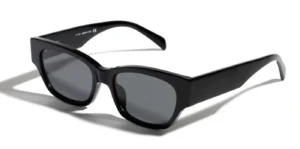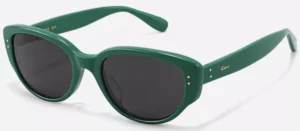This Eyewear testing guide is issued by the Eyewear Frame Quality Management Department of iDetail Sunglasses Manufacturers.
1. Eyewear Testing’s Aim
To test the variation of the normal opening of the eyeglass’s temples after, exposing the glasses frames at elevated temperatures.

2. Eyewear Test’s Standard of Reference
UNI EN ISO 12870 : 2004 Par. 4.6
3. Eyewear Test Procedure
(1) At an ambient temperature of 23°C ± 5°C, take the test sample with the sides open to the fullest
extent (for frames with spring hinges, opened to the fullest natural extent without activating the
spring hinge mechanism) and measure the distance between the tips of the temples.
(2) Record this measurement as the pre-heating value L1.

(3) Before commencing the test, stabilize the oven at the test temperature of 55°C ± 5°C.
(4) Place the test sample on a plate (glass or metal) in the oven with the temples still open to the fullest
extent, and with the top edge of the front and the top edge of the temples resting on the plate surface.
Ensure that the sample does not touch other samples or the oven wall.
(5) When the test sample has reached the established test temperature, leave it at the test
temperature for a further 2h +5 min.
(6) After this period, remove the sample, still positioned on the plate, from the oven. Allow it to cool,
still positioned on the plate, for a period of at least 2h at 23°C ± 5°C.
(7) Repeat the measurement of the distance between the tips of the temples as described in 3.1.
(8) Record this measurement as the post-heating value, L2.

(9) Calculate the difference between L1 – L2.

4. Evaluation of the Eyewear Test Results
The difference between the two values shall not vary by more than +6mm or -12mm. For glasses with
temple lengths less than 100mm, these tolerances are reduced to +5mm or -10mm.



